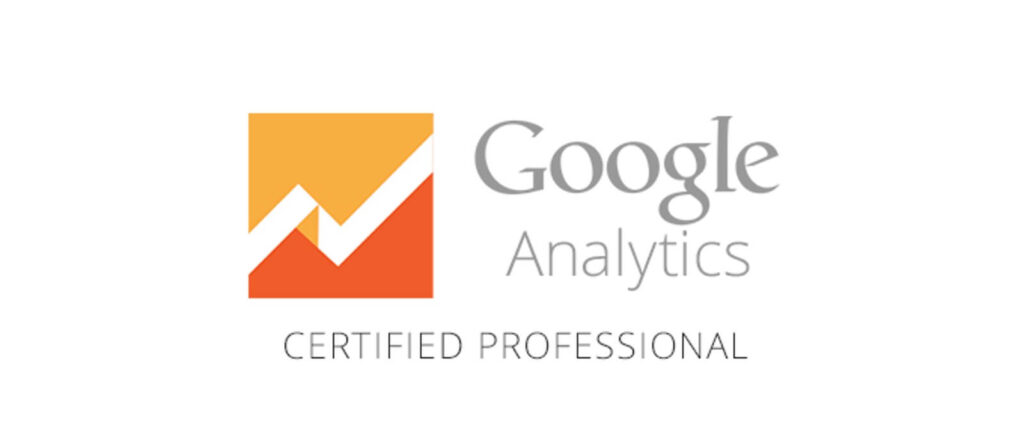Digital marketing doesn’t end with launching your website. You have to ensure you have a compelling copy, excellent web design, smooth page speed, and track your website activity with a web analytics tool.
Google Analytics site has been around for several years, but some webmasters haven’t noticed or taken advantage of its usefulness. It is an immersive platform from Google that allows you to analyze, monitor, and track your website or app performance.
Google site analytics, a part of Google’s Marketing Platform, provides statistical data for your SEO and digital marketing campaigns. Why is google analytics important? It helps marketing experts to collect web traffic insights, help identify the major sources of traffic, gauge ROIs, and discover trends in user engagement – all in real-time.
This article is a complete guide to understanding google analytics and how to use it to track website traffic.
How Does Google Analytics Work?
To ascertain how to use Google analytics for marketing, you need to know it works. Google Analytics site provides you with a JavaScript tag which you will input into the code of your web pages. This tag runs in the background of each page, collating data and insights to send to the receiving server.
The google analytics tracking tag depends on website cookies to function effectively. If you have disabled it, it won’t be able to collate data.
Why is it important? Because it provides you with web metrics google analytics such as:
● Users. The number of visitors to the website or web page.
● Sessions. This is the interaction of visitors within a 30-minute window.
● Average session duration. The average time each visitor remains on the site.
● Pages per session. The average page views within a 30-minute window.
● Page views. The number of pages viewed.
● Percentage of new sessions. The percentage of website visits made by a new visitor.
● Bounce rate. The percentage of users who viewed a single web page only.
There are also several metrics you can view on the web analytics dashboard.
How to Set Up Google Analytics
If you want to use Google Analytics to track website traffic, you need to learn how to set it up. Follow these steps below to install it on your website.
Sign In to Google Analytics
If you have a business google account, it’s pretty easy to use Google Analytics without stress. If you don’t have one, you can create one here. Once you have created one, sign up on the web analytics platform and set up your account.
Name Your Account And Input Other Details
It is recommended to use your business name or business name for the account’s name. It’s because you may have multiple websites you may want to track. You need to identify one from the other.
After naming the account, you need to fill out the other sections such as website name, website URL, category, and the reporting time zone.
Copy and Paste the Tracking Code
After filling in that information, click “Get Tracking ID” at the bottom of the page. You will be prompted with a unique HMTL tracking code that you need to apply on your website. If you don’t have the experience, you can contact an SEO specialist to handle it.
It’s simple. Open your website editor and paste it to either your website’s header or footer file. Ensure that the code is contained before the closing </head> tag if you want to place it in the header file, or contained before the closing </html> tag if you want to put it in the footer file.
Types of Google Analytics Accounts
Google Analytics accounts are made up of one or multiple GA4 properties. A GA4 consists of one or more data streams – either web data stream (for websites) or app data stream (for mobile apps).
Google Analytics 4 properties contain an SEO analytics reporting dashboard. It isn’t possible to add more reporting views, except you’re using Google Analytics 360.
The bottom line is that you’d only need one Google Analytics account if you own one company. If you’ve got multiple businesses to monitor, you’d need multiple GA accounts.

What Is Google Analytics Certificate?
If you want to kick start a career in digital marketing, you need to know about Google Analytics for website and how it works. Google offers certification to individuals to test their knowledge and ability to use the platform.
The certification is called Google Analytics Individual Qualification (GAIQ). This certification proves that you have passed Google’s assessments and have superior knowledge about using the platform.
There are several benefits to having a GAIQ certification:
● A plus on your resume. The GAIQ certification is a plus on your CV and makes your professional portfolio more compelling to recruiters and clients. It also allows you to stand out from the others who do not have the certification.
● Improves your skill set. The GAIQ certification shows you understand how Google data analytics works.
To get started, sign up on Google Skillshop and visit Analytics Academy to begin becoming certified. You need to read the course material on the platform to understand google analytics basics and advanced studies.
After studying, you can take the Google Analytics Individual Qualification from your Skillshop account. The exam is free and remains valid for a year. You must have 80% or higher correct answers to pass the exam. You can retake the exam in 7 days if you fail the exam.
Google Analytics Reports
Google site analytics contains a truckload of different standard reports from your website activity. Some of these reports are divided into:
● Realtime
● Audience
● Acquisition
● Conversions
● Behavior
What’s more? You can create a custom report within the platform. Some of the most popular reports include:
● Content marketing report. It allows you to track your blog posts generating the most activity.
● SEO report. It will enable you to identify which web page or content generates the most traffic from organic search.
● eCommerce report. It allows you to understand the sales funnel from a lead to sales completion.
● PR report. It tracks your social media impressions from press releases, email marketing, or social media content.
● PPC campaigns. It allows you to track website copy, landing pages, or content that generates the most sales.
Other reports include channels, mobile performance, behavior flow, acquisition overview, site content, navigation summary, funnel analysis, top conversation paths, and many more.
Google Analytics Tools
Google Analytics reporting tools are essential in your website activity, analysis, and performance. With these tools, you’d fully control what happens within your website with real-time insights, metrics, and data.
Some of the SEO analytics reporting tools include:
● Google Tag Assistant.
● Google Analytics URL Builder
● Real-Time Reporting
● Google Analytics Table Booster
● Google Analytics Debugger
● Audience Location
● Events
● RegExr.
These SEO google analytics tools can be used to get the best out of the analytics platform.
Google Analytics Limitations
As much as Google Analytics is beneficial for businesses and webmasters, it does have its limitations. Some of them include:
● No roll-up reporting. It is a feature that allows you to see global-performance metrics for different geo-localized domains (.co.za, .co.uk, .com, .nz, .org, etc.) under one dashboard. The feature isn’t available on GA.
● No access to raw data. GA only reports aggregated data presented in summary. In essence, it may be difficult to run some sophisticated analysis.
● Restrictions on hits. GA placed a threshold of 10 million hits monthly. Hits, in this case, aren’t website visitors or sessions within your web pages but interactions such as screen view, page view, eCommerce transactions, and events. When the hits surpass 10 million, Google will not accurately track them.
● Zero compliance with EU laws. Google saves user data on cloud servers in the US. However, this violates the General Data Protection Regulation (GDPR) from the EU.
● Lack of customer care and support. While dedicated forums handle complaints, there’s limited customer support to take care of your needs.
What Is Metric in Google Analytics?
Web metrics google analytics are measurements of data and insights that show a website’s performance. Some of these metrics include:
● New users
● Users
● Revenue
● Average session duration
● Bounce rate
● Transactions
● Exit rates
● Conversion rates, etc.
These metrics are revealed in the google analytics dashboard after you’ve connected it to your website.
Analytics vs Metrics
People often mistake analytics for metrics or vice versa or use them interchangeably. But they’re distinct in their functionalities.
While metrics deal with gathering your data such as web visitors, total revenue, leads, etc., analytics simply analyzes the data for you to make informed decisions. While metrics are merely gathering data, analytics deals with trends and makes you understand customer behavior regarding your offerings.
Google Analytics Services
Discussing Google site analytics seems like a mouthful and is perceived as a complicated process. That’s why if you need help setting up GA for your website and taking advantage of its unique features, you need to hire professional google analytics services to take care of it.
These services can help you determine your goals and objectives, understand your existing data, and recommend solutions for your digital marketing campaigns.
Conclusion
Google Analytics SEO is an innovative platform for collecting your website and mobile app activity. Follow these steps highlighted in this google analytics guide above to get started.




